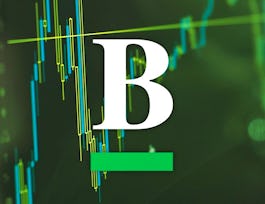Welcome to the Macroeconomics course! This course is designed to provide you with a deep understanding of what an economy is, how it operates, and the factors that sustain and influence economic activity, including the role of policy interventions. You will explore macroeconomic policy analysis at the national level, essentially focusing on short-term macroeconomics, generally described as macroeconomic stabilization against growth or long-term macroeconomics. You will comprehend the theoretical frameworks through a contextualized treatment of concepts considering the experiences in the developing world and the global economy. You will get familiarized with the major macroeconomic debates. The course emphasizes intuitive learning of concepts with the help of diagrams, with only limited reliance on statistical or mathematical techniques.



Recommended experience
What you'll learn
Examine macroeconomic variables, estimation, and their interpretation in a real-world context.
Evaluate the conceptual macroeconomic frameworks and analytical tools to understand the working of an open economy.
Elaborate the working of fiscal and monetary policy and the institutional context in a developing economy.
Details to know

Add to your LinkedIn profile
22 assignments
See how employees at top companies are mastering in-demand skills


Earn a career certificate
Add this credential to your LinkedIn profile, resume, or CV
Share it on social media and in your performance review

There are 7 modules in this course
This module introduces you to the basic macroeconomics concepts, macroeconomic indicators, and related terminologies. It defines an economy, its actors, and the notion of output gap. You will look at the circular flow of income, which highlights the importance of the system’s economic stability in sustaining economic activity and growth.
What's included
7 videos2 readings3 assignments
This module discusses the measurement of macroeconomic indicators and related issues. It is essential to track economic activity and provide evidence-based policy prescriptions when there are concerns about the stability and sustainability of the economy with consequences for the behavior of various economic agents. It elaborates conventions that guide the system of national income accounting. You will also discuss the use of GDP as an indicator of economic activity, its limitations, and its use in tracking human and social well-being.
What's included
8 videos1 reading4 assignments
This module discusses the conceptual or the theoretical underpinnings of aggregate supply and demand schedules. It elaborates on the Classical and Keynesian premises of macroeconomic analysis. This is followed up with an elaboration of empirical evidence for the aggregate supply schedule by visiting the Phillips curve and its modern interpretation involving the relationship between inflation and unemployment.
What's included
7 videos1 reading4 assignments
The aggregate demand, the Keynesian contribution to macroeconomic analysis, is the main driver in the short-term stabilization of the economy. This module discusses the components of aggregate demand – consumption, investment, government spending, and net exports. By analyzing the demand for money and how the money market works, you will gain insights into developing an integrated treatment of the goods and the money market.
What's included
7 videos1 reading2 assignments
This module advances you to macroeconomic analysis by integrating the functioning of the money and the goods markets with the help of the IS-LM analytical tool kit. It goes on to elaborate the use of fiscal and monetary policy, identifying the application of specific policy instruments, for macroeconomic stabilization of an economy. It also discusses the institutional context of conducting fiscal and monetary policy.
What's included
7 videos1 reading4 assignments
This module takes the final step in bringing macroeconomic analysis to the real-world context. It includes the external sector, thereby opening up the scope for capital flows, apart from trade in merchandise and services in the economy. You will look at the functioning of foreign exchange markets against the backdrop of flexible exchange rate regimes and some others. It goes on to highlight the efficacy of fiscal and monetary policy in the context of an open economy.
What's included
7 videos2 readings3 assignments
This module highlights some important macroeconomic debates and their influence on the development thinking of the times. It traces how the role of the state and markets evolved in that context. It discusses the success stories of the 20th century and the countries that transited from the developing status to the developed ones. You will explore how that transition may have been helped using unorthodox or heterodox macroeconomic policy instead of the orthodox prescription pursued in this course. The module also describes the contours of a heterodox macroeconomic policy approach.
What's included
7 videos2 readings2 assignments
Instructor

Offered by
Why people choose Coursera for their career




Recommended if you're interested in Business

University of Illinois Urbana-Champaign

Erasmus University Rotterdam

University of Illinois Urbana-Champaign

IE Business School

Open new doors with Coursera Plus
Unlimited access to 10,000+ world-class courses, hands-on projects, and job-ready certificate programs - all included in your subscription
Advance your career with an online degree
Earn a degree from world-class universities - 100% online
Join over 3,400 global companies that choose Coursera for Business
Upskill your employees to excel in the digital economy


